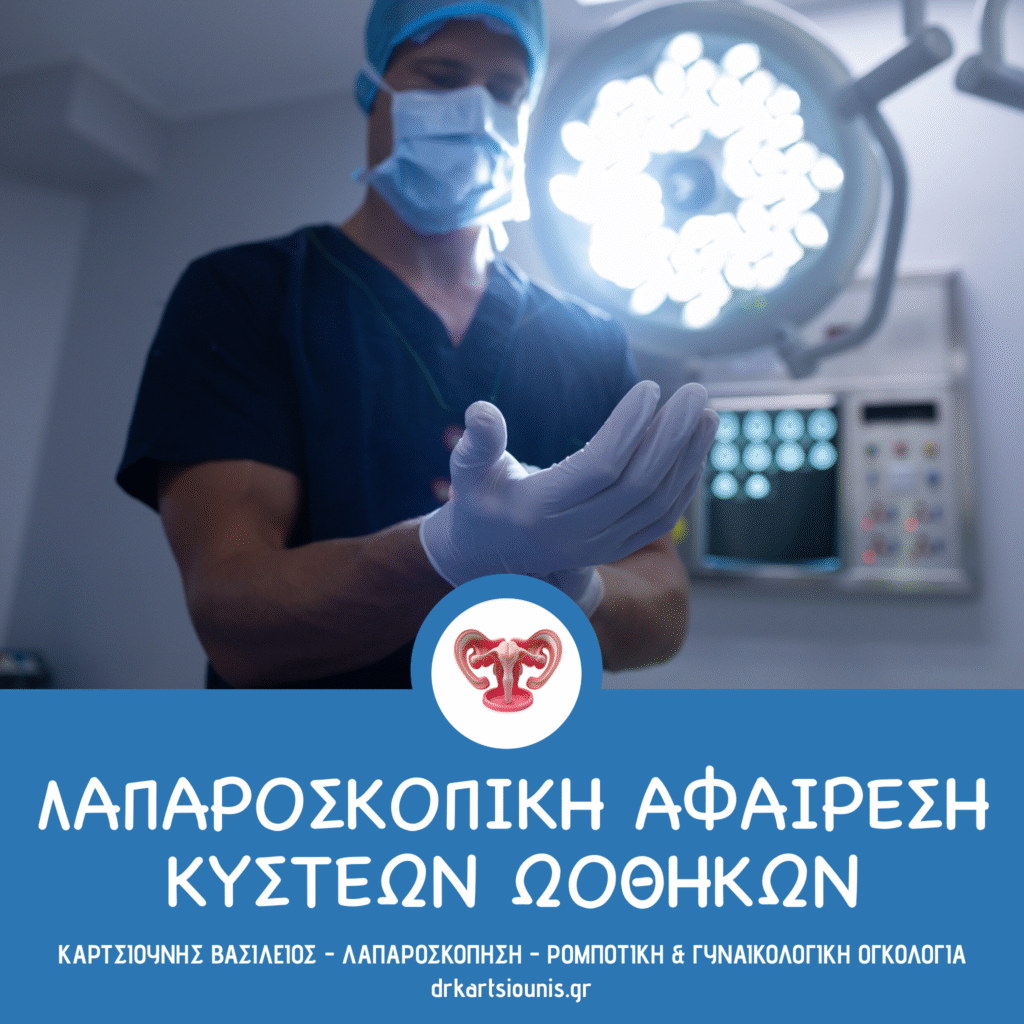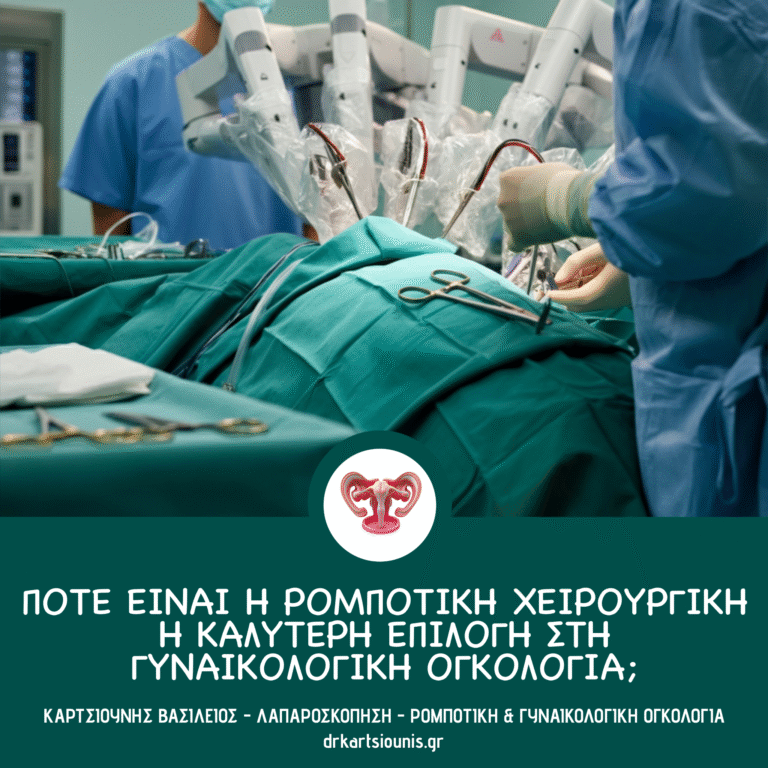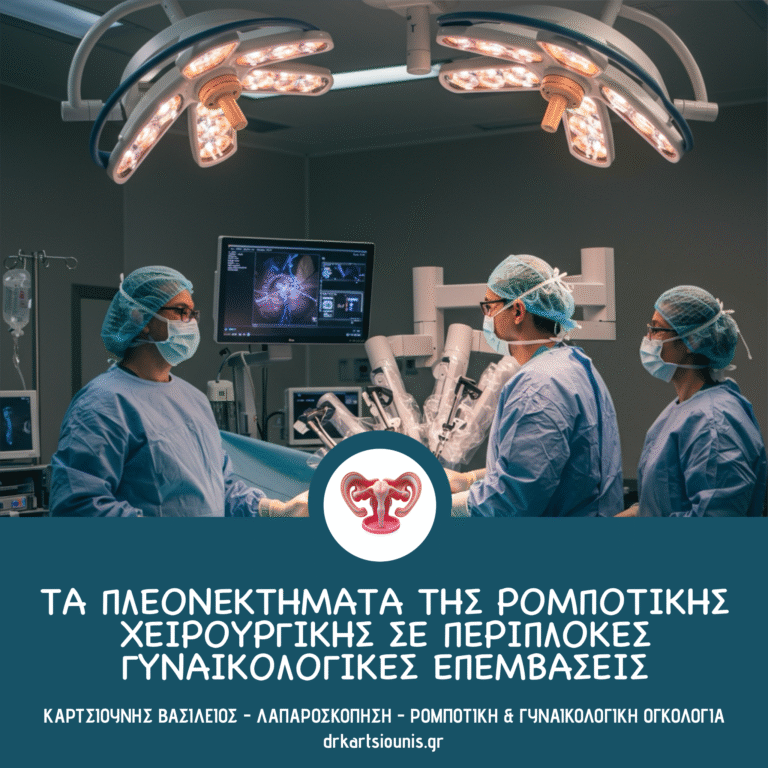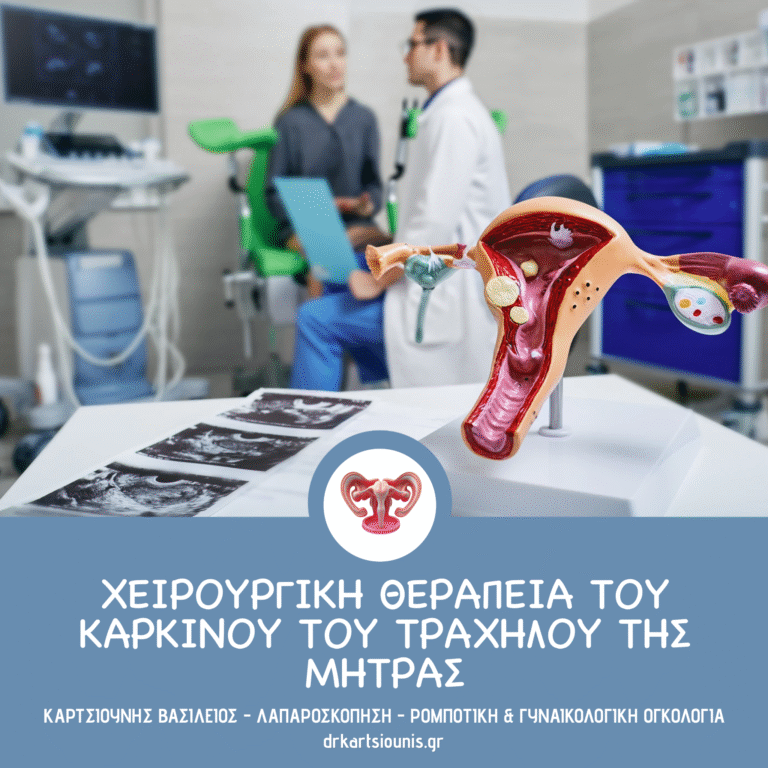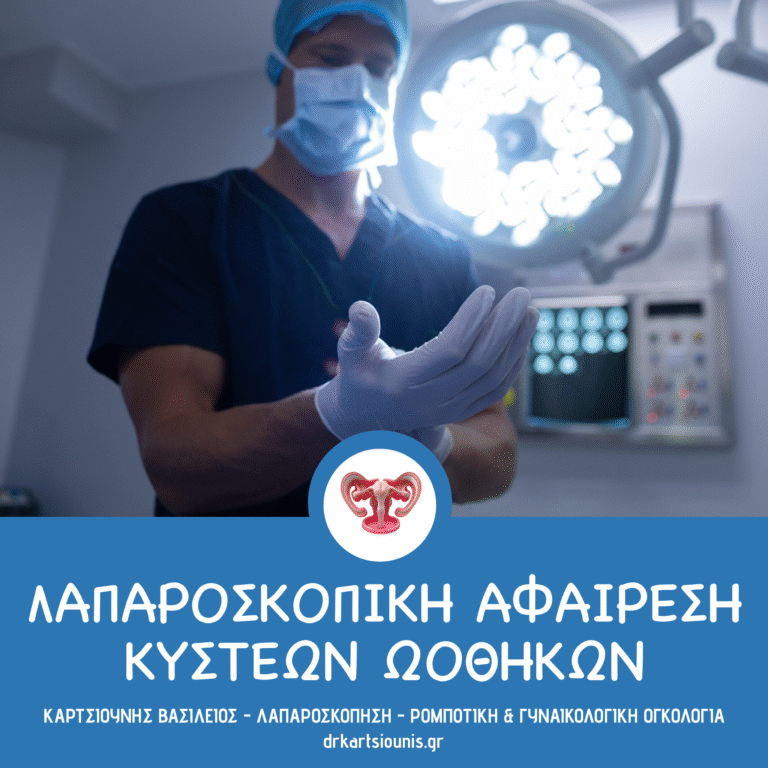Ovarian cysts are something that many women worry about during their lifetime. Most of the time, they do not require any treatment and disappear on their own. However, there are cases where their presence causes severe symptoms or raises health concerns, in which case surgical removal is necessary. One of the most modern and patient-friendly methods is laparoscopic cystectomy – a technique that combines precision with quick recovery.
When should a cyst be removed?
Not all cysts are removed. The majority of them, especially if they are small and functional, will resolve without the need for surgery. However, there are specific indications that lead the doctor to recommend surgery:
- If the cyst is large (usually over 5-7 centimeters)
- If it persists for a long time
- If it is accompanied by severe pain or pressure on other organs
- If there is suspicion of malignancy, especially in postmenopausal women
- If it causes ovarian torsion, an emergency
- If it affects fertility, as is the case with endometriotic cysts
How is laparoscopic surgery performed?
The procedure is performed under general anesthesia and involves 2-3 small incisions in the abdomen. Through these, the gynecologist inserts special tools and a camera (laparoscope), which allow him to see the area clearly and remove the cyst precisely, without damaging the remaining ovary. The duration of the operation is about an hour and the recovery is usually very short. Most women return home the same day or the next day.
Why choose laparoscopy?
- Minimal pain and discomfort
- Very small incisions (almost invisible over time)
- Quick return to daily life
- Less chance of complications or adhesions
- Preservation of the ovary and, by extension, fertility
After surgery
Recovery is usually simple, but care is needed:
- Avoid physical exertion for 10-15 days
- Take care of your diet and hydration
- Visit your gynecologist for a check-up.
- Discuss with him when you can try to get pregnant, if that's a concern for you.
Conclusion
Laparoscopic cyst removal is a safe and effective option that offers excellent results while respecting a woman's health and fertility. Dr. Kartsiounis has many years of experience in modern laparoscopic techniques, ensuring his patients excellent care and personalized solutions. If you are experiencing ovarian cysts or symptoms that concern you, do not hesitate to schedule a medical evaluation.
